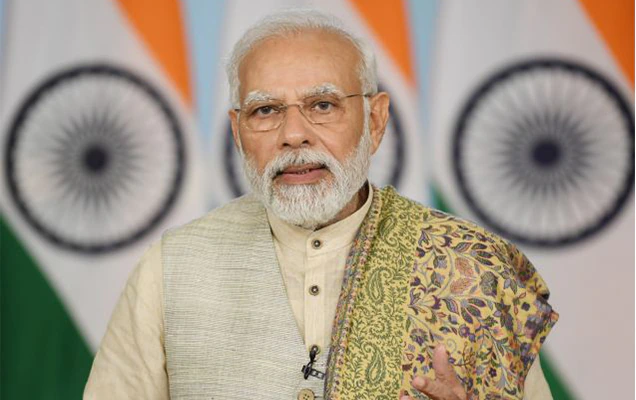India’s continued focus on reforms and infrastructure development has enabled the country to strengthen its economic fundamentals and push GDP growth. In October, the S&P Global purchasing managers’ index or PMI for manufacturing increased to 55.3 for India up from 55.1 in September. This is the 16th straight month in a row that India’s manufacturing PMI has remained above 50. Any reading above 50 is considered as growth in the crucial manufacturing sector while a sub 50 score indicates contraction.
According to S&P’s information and data service provider Markit, Indian manufacturers have procured additional inputs in October as they look to rebuild stocks for increasing sales. Hiring in the sector has also increased at a marked rate that was one of the strongest since data collection started in March 2005, it noted.
The whole world is looking at India with great hope during this turbulent time of global uncertainties because the country’s economic fundamentals are robust and its political leadership is strong, a senior official pointed out.
The economic reforms and implementation of welfare schemes is unparalleled in terms of scope, scale and effectiveness. This has ensured a strong aggregate demand in the economy which helps to push economic growth, he added.
Even as the International Monetary Fund (IMF) reduced India’s growth projection from the earlier 7.4 per cent to 6.8 per cent, the country will still be the fastest growing economy in the world. The Narendra Modi government is expecting to touch a growth rate of about 7 per cent for the current financial year.
Apart from becoming the fastest growing economy in the world, India has recorded an inflation rate that is much lower than other countries reflecting the strong fundamentals of the economy.
Despite the surge in global crude oil prices, India’s retail inflation in the first six months of the current fiscal year stood at 7.2 per cent lower than the world inflation of 8 per cent as represented by the median inflation of major economies, a finance ministry report highlighted.
Yesterday, Prime Minister Modi while inaugurating the Invest Karnataka 2022 Summit pointed out that India has attracted FDI to the tune of a whopping $84 billion over the last year. This is because India’s macroeconomic fundamentals have remained strong despite rising global challenges.
“We are continuously working towards cementing our fundamentals to further strengthen India’s economy with each passing day,” Modi said.
“We have freed our investors from red tape and given them a red carpet of opportunities. We have encouraged investments in various sectors that were earlier closed to private investments such as defence, drones, space, and geospatial mapping,” Modi said.
A government insider told India Narrative that one of the most critical facets that has worked for the country’s economic well-being is the Modi government’ refraining from carving out populist measures in the post Covid phase.
“But we carried out reforms, gave targeted benefits to the poor and refrained from being populist,” he said.
The Union Budget this year primarily laid emphasis on economic growth and recovery through enhancing productivity and the multi-trillion PM Gati Shakti plan.
India last year thrashed out a stimulus package of Rs 29.87 lakh crore — equivalent to 15 per cent of the GDP — in a bid to contain the impact of the pandemic on health and economy.
“The government increased the capital expenditure by about 35 per cent—it has gone up to Rs 7.50 lakh crore. It will provide a big push to infrastructure sector and also create large scale employment,” Gopal Krishna Agarwal, BJP’s spokesperson said.
“India is on a strong wicket, we should remain focused on boosting economic growth..the encouraging news is that the Centre has been doing so..once growth picks up, everything else will automatically fall in place,” Deepak Sood, Secretary General Assocham said.
Also read: India tops world ranking in digital payments
Team Modi sees PM Gati Shakti as a game changer on economic front




















